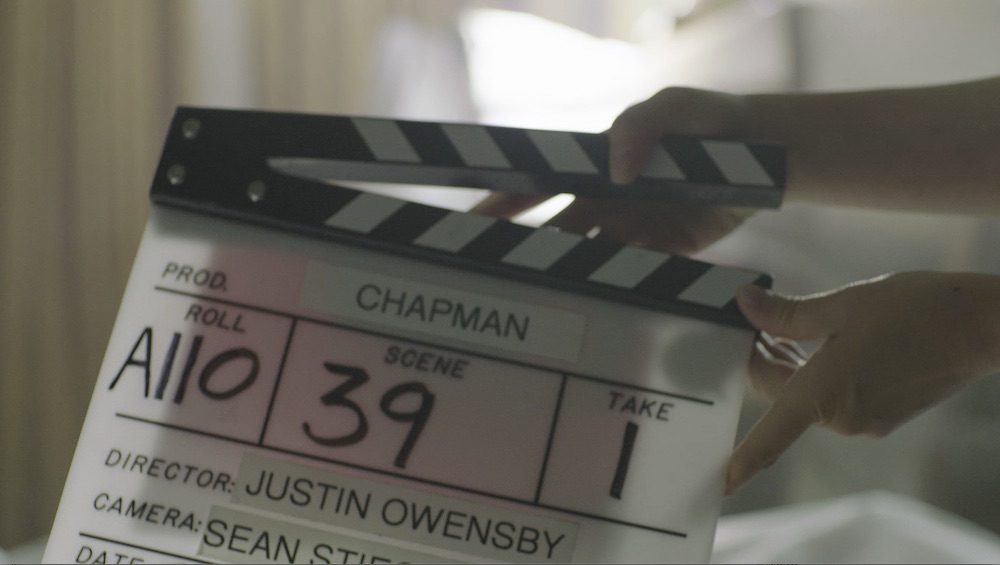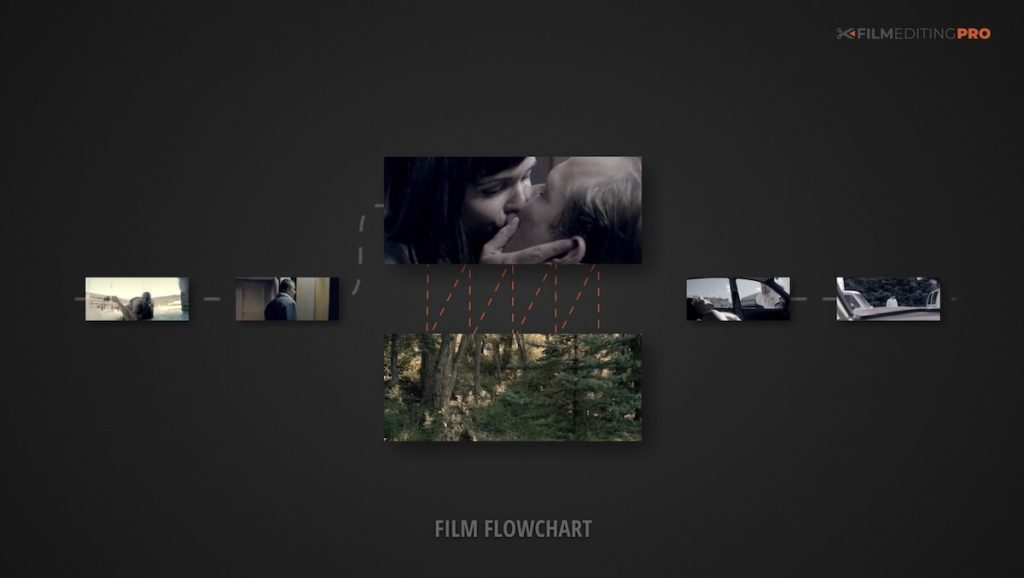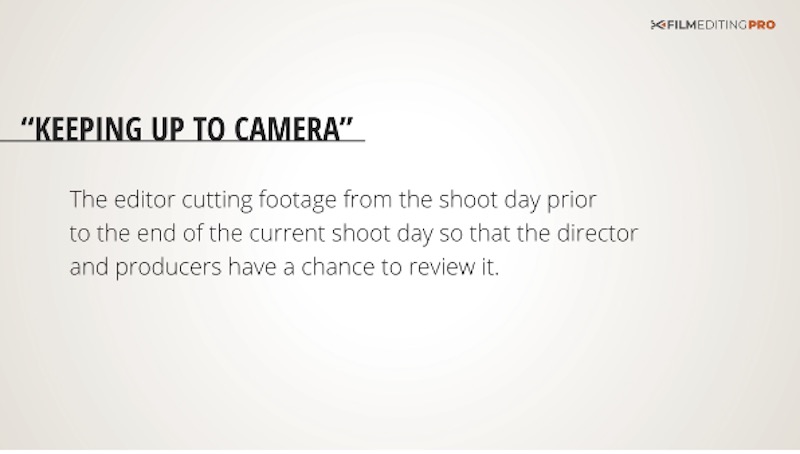The Art of Drama Editing Review

Film Editing Pro’s The Art of Drama Editing is a unique training course that gives you the opportunity edit a whole feature film.
As a video editor this raises an interesting question, that I’ve always asked myself:
Do I have what it takes to edit a feature?
Most editors I know want to edit a feature film. Of those who have that desire, only a fraction actually will.
To even get access to a feature length project you need to have both the right previous experience and the robust industry connections to even stand a chance.
Yet, Film Editing Pro’s latest endeavour gives everyone the chance to edit a feature film, and be supported by their professional grade training, along the way.
The Art of Drama Editing gives you access to the complete dailies of an indie feature film; that’s over 30 hours/1110+ shots of 1080p dailies filmed on ARRI Alexa’s, to craft into a compelling narrative.
Other than Inside The Edit, probably the best documentary editing course available today, The Art of Drama Editing is one of the only places I know of where you can learn to edit an entire feature film from a complete set of dailies.
So should you seize this opportunity and is it worth the time and money?
That’s what this review is all about, because I can’t think of many editors to whom this isn’t a tempting proposition?
Do you really have what it takes to edit a feature?
Let’s find out.
The Art of Drama Editing – Free Taster Course
To entice you to look into whether The Art of Drama Editing is a good fit for you, Film Editing Pro is offering a free 3-part mini course which gives a broad overview of some of the concepts you would need to know as an editor to cut a dramatic narrative scene.
Crafting a compelling narrative on your timeline requires a deep understanding of things like pacing, story structure, transitions, sound design, and last but not least, the filmmaking process that created the footage in the first place.
Chris, Editor & Film Editing Pro Instructor
I’ve discovered that they’ve actually shared the first part of this on their YouTube channel, which you can watch above, while you’ll need to sign up (for free) for Parts 2 and 3.
Here’s what the mini-course covers:
- Part 1: Cinematic Storytelling for Editors
- Deconstructing the visual language of filmmaking
- How to tell a compelling story
- Part 2: Pacing & Timing Your Cuts
- How to figure out the pacing & timing of cuts
- Deconstructing an edit paced 3 different ways
- Part 3: Editing Picture & Sound Creatively
- How to enhance a moment with sound design
- Visual effects tricks to add interest to shots
Click here to sign up for The Art of Drama Editing Free Taster Course
So what about the actual course?
The Art of Drama Editing – What’s included?

Split across 10 modules and over 40 lessons The Art of Drama Editing offers a seriously comprehensive guide to editing a feature film, and having reviewed several Film Editing Pro courses before, they’re always highly polished and full of reliable professional information.
While the course begins with introductory editing concepts, to set the stage for absolute beginners, the lessons that caught my eye as an experienced editor included:
- Lesson 09: Feature Film Organization Techniques
- Lesson 12: Film Production Realities
- Lesson 13: Creating Feature Breakdowns & Selects
- Lesson 20: Interweaving Storylines with Cross-cutting
- Lesson 25: Bringing a Scene to Life with Foley – Building the Cut
- Lesson 29: The Mechanics of Scene Pacing & Timing
- Lesson 31: Assembling the Feature
- Lesson 34: Smoothing Transitions Between Our Scenes
- Lesson 35: The Audio Mixing Process
- Lesson 37: Outputting Your Film for Presentation & Delivery
to name just a few…
My temptation would be just to dive in with the dailies and start cutting, and dip into the training when I got stuck, but I’m sure I’d learn a ton by watching the training as I progressed through the edit.
The only constant is that there is always more to learn!
The Art of Drama Editing – An Editor’s Review

Here are some of my initial impressions of the course, after watching through some of the training, downloading some of the dailies and trying my hand at editing a few of the scenes.
The Downloads are really quick but there are many! By my count there are 37 individual download links ranging anywhere from 1-15GB each. So you will definitely need to set aside some dedicated ‘background time’ to download everything and store it on an external drive.
The Dailies
As pointed out in the Film Production Realities lesson some of the scripted scenes weren’t filmed, some scenes are miss-labelled on the slate, some weren’t labelled or slated at all and some are censored ‘to keep things family friendly’ (obscuring so male nudity, which is only there for comic effect).
This is how it is on productions of all kinds (maybe not the male nudity…) and so this also provides a useful learning experience for managing footage you’re not sure where it fits or what it’s for, but figuring it out as you go.
But thankfully this is largely the exception and the footage looks great and plays back very easily, even on a low-performance machine.
There’s also lots of it. Which is great.
The Training
The training is narrated by Chris, Film Editing Pro’s main instructor, with lots of the hands-on editing parts of the training led by Brian. Both are pleasing to listen to and articulate the concepts and techniques with ease.
Although Brian is editing the project in Avid Media Composer, the training doesn’t get into the weeds of any one NLE so you can edit your version of the film in any software you like.
I was really impressed by watching Brian edit, because he does a great job of narrating his thinking in why he’s making the choices he is. It’s also helpful to see someone else explore the footage, picking out their favourite moments, solve problems and try things that don’t ‘work’ as this is so much of what editing is.
Personal exploration and interpretation, subjective solutions and creative impulses. This is also why you can give the same footage to 10 different editors and get ten different scenes and they can all ‘work’.
If you’re new to editing the course won’t leave you behind, as it has a good on-ramp to the essential ‘rules’ and precepts of editing dramatic scenes, as well as delivering a really solid foundation on how to organise and work with your dailies to turn them into cut scenes.
The course also covers numerous creative techniques in both picture and sound as well as tackling the overall narrative structure of a film and keeping the pace and storytelling moving. The end of the course covers polishing both video and audio and, importantly, delivering your final cut.

Even as an experienced editor who hasn’t cut all that much dramatic content, I learned a lot from the training about some of the best practices for handling this kind of material.
I’m sure I could have ‘found my own way’ through the footage, but when you understand why some of these specific techniques are used in scripted editing, and you see the benefits in action, you pick up valuable transferrable skills, regardless of what you’re actually cutting day to day.
For example, learning why it’s worth taking the time to build a line break down (each line from every angle back to back) because it helps you to better evaluate performances and find unique nuggets in the footage (and find them again, weeks later).
Even this small example, once again helped me to appreciate that every ‘sphere’ of editing (documentary, drama, trailers, etc.) has its own challenges and required skill sets and so has something new to teach old editors.
What can I do with my finished edit?
The Film Editing Pro usage agreement allows you to use most of the footage, music and sound effects in your demo reels or in meetings to get work, as well as for educational purposes.
If you do host them online they’ll need to be password protected.
This makes sense in both protecting their course content, but also enabling you to use your cut scenes to get you work in the future, which is, after all your likely purpose in taking the course!
My Idea – The Indie Feature Editing Experience

One idea that came to me while writing this review is the suggestion for a cheaper, week long “indie feature editing experience”. This would give you the chance to see what it might be like to work as an editor on a low-budget feature for a week.
Each day you would get an email with a download link to access that day’s dailies. You would then have to try to ‘keep up with camera’ and cut those scenes or finish the previous day’s scenes, and experience first hand what it’s like to be your own assistant and editing scripted scenes for 5 days straight.
Maybe this would cost $200 but it would be really cool if you could then convert that payment into a down-payment towards the rest of the full The Art of Drama Editing course.
This would be a great way to help you get your feet wet, before you invest the requisite time and money that the full course requires.
But in fact the team behind The Art of Drama Editing have woven part of this experience into the course by not simply editing from scene 1 and working their way through to the end.
If you follow the training the order in which you cut the scenes jumps around all over the place, to try to emulate the experience of the editor cutting during production.
Final Thought
As with everything I’ve experienced in the past with Film Editing Pro, their editing training and user experience is very high quality, nicely polished and really well thought-through.
My experience with The Art of Drama Editing was delightful and it really does represent a unique opportunity to take on a full feature film edit and navigate the challenges and rewards of solving all those narrative problems.
I don’t know of anywhere else you can get this combination of training and material for this price. To me, it’s a great deal and an exciting opportunity.
If you want to learn more about Film Editing Pro and their courses, check out these these previous posts:
PRO Vs STANDARD – Why You Should Upgrade

There are three tiers to choose between when it comes to signing up for the actual The Art of Drama Editing course.
Standard
- 30+hours of 1080p dailies
- 140 piece music and SFX library
- 40+ training lessons (14 hours!)
Pro
- 200+ additional takes and camera angles
- 400 piece foley sound pack (you can use on anything)
- 5 extra lessons (2.5+ hours)
While the Standard tier gives you the bulk of the dailies to work with, plus all of the instructional training, and at half the price of the Pro option, I reckon it is worth upgrading to the Pro tier for a couple of reasons.
The first and most compelling reason is that if you’re serious about investing the substantial amount of time required to cut a feature film, you may as well be working with all of the dailies from the project in order to make the best technical and creative decisions you can and to give yourself the most authentic experience.
Secondly, you’ll gain access to 5 extra lessons, including an hour of detailed training on both sending out turnovers to other departments such as sound, colour and VFX but also how to integrate those deliverables back into your final edit.
Personally, the Ultimate tier seems far too expensive for most folk, but if you are hungry for detailed feedback on your work – which could prove invaluable to your learning and development – then it might be worth it, but it seems pretty steep at 12x $250 = $3000.
Although, you can pay $2,497 up front and save $500, but still!
How much does it cost?
The Art of Drama Editing Pro tier costs $997 if you pay up-front, saving you $167 compared to paying $97 for 12 months ($1,164)
Or the Standard option is only $497 up-front or 12 x $47/month ($564).
Compared to other training of this quality and rarity it strikes me as a good deal, especially for anyone who is serious about pursuing a career in scripted film or TV but, as yet, has no experience handling dailies or actually cutting dramatic scenes.
Plus, aren’t you curious to know if you could do it?
As an aside, if you want to start a career in narrative feature film editing, I can’t think of a better course to teach you how to be an assistant editor than Master The Workflow’s Assistant Editor training. It’s really superb.
Caveat – Why You Shouldn’t Kid Yourself
One caveat that’s probably so obvious it’s not worth making, but there’s no point buying training you won’t actually spend the time watching, absorbing and putting into practice.
So don’t kid yourself that if you drop $997 on a training course that gives you the chance to cut a feature film, that you will actually do it.
But, if you have always wanted to edit a full length film, this is your chance, and who knows where the experience and learning you gain from doing it, could take you?
Check it out for yourself via the free 3-part mini-course here.
Taken the Course? Hit the Comments!
If you’ve taken the course, or do take the course after reading this review, do let me know how you get on in the comments below.




